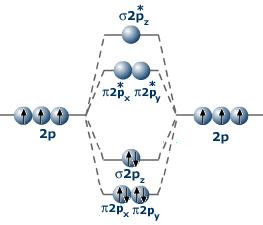
Atomic Structure is based on the component parts of an Element. An Element is a unique chemical substance found in nature that is made up of specific, identical atoms. Examples of elements are iron, carbon, oxygen, sodium and chlorine.
An atom is the smallest particle that has the properties of the element. Each atom is made up of three things:
Protons (P+) - the smallest positively charged unit of matter Neutrons (N) - the smallest neutral unit of matter (no charge) Electrons (e-) - the smallest negatively charged unit of matter
The structure of each atom, the Atomic Structure, has a ball shaped center called the nucleus which contains the protons (P+) and the neutrons (N). Around this nucleus, the electrons orbit like planets around the sun as shown in the picture above.
Each atom of the a specific element has a constant and unique number of protons. Each element of an atom has an equal number of protons and electrons. Therefore, the element and its physical properties are defined by the number of protons and electrons specific to the element.
Atomic Number of an element is referred to as Z and is the total number of protons (P+) that the element has. Since each element has the same number of electrons as protons the Atomic Number is also equal to the number of electrons each element has.
Atomic Mass of an element is the total mass (weight) of all the protons, neutrons and electrons that make up the atom of an element. The protons and neutrons are much bigger and heavier than the electrons. The protons and neutrons have an individual Atomic Mass of about 1.
Given the information in the above paragraph, we can calculate the number of neutrons in an element from the Atomic Mass and the Atomic Number. Since the Atomic Mass rounded to the nearest whole number is equal to the sum of the number of protons and neutrons, and the Atomic Number is the number of protons, then the # Neutrons can be calculated as follows:
# Neutrons (N) = Atomic Mass - Atomic Number (Z)

Building the Elements
Hydrogen As stated above each element is made up of an unique and equal number of protons and electrons. The simplest element is Hydrogen, the most abundant element on earth. The Atomic Structure of Hydrogen has one proton and one electron and therefore, it has an Atomic Number of 1.
Some of the most common elements and their number of protons and electrons are show in the table above.
Helium If we add one additional proton and one additional electron to Hydrogen, we have the element Helium, the second most abundant element on earth. Helium is the gas that is used to inflate balloons for kids' parties. Since Helium has two protons it has an Atomic Number of 2.
Carbon If we continue adding protons and electrons until we have a total of six each, we have the element carbon which has a Atomic Number of 6. Carbon is the fourth most abundant element on earth and is present in all known lifeforms.
Nitrogen If one more proton and electron are added to carbon we have the element Nitrogen with a total of seven protons and electrons and an Atomic Number of 7. Nitrogen is a very common element in nature. Air is approximately 80% nitrogen.
Oxygen Adding one more proton and electron to Nitrogen gives us the element Oxygen which has a total of 8 protons and electrons and an Atomic Number of 8. Air is approximately 20% oxygen and is necessary for all human life.
The proton and electron composition of all 103 known elements can be constructed in this manner, beginning with Hydrogen and adding one proton and one electron at a time. The first 12 elements are shown in the table above.

















































